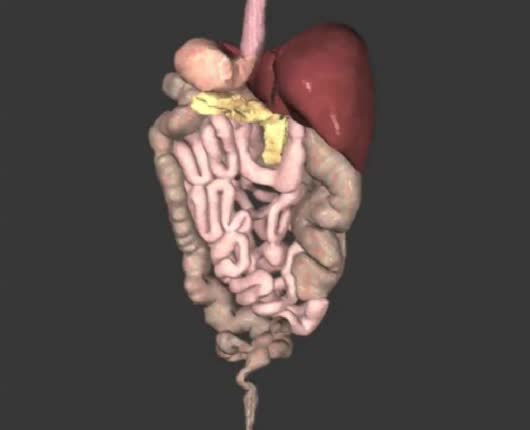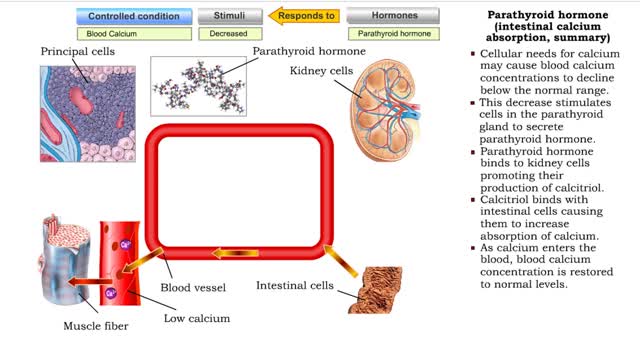Search Results
Results for: 'Lipid absorption'
Lipid absorption - end products & transport mechanism
By: HWC, Views: 10495
• The end products, fatty acids and monoglycerides, depend on bile salts for absorption. • Bile salts form micelles (tiny spheres), which ferry fatty acids and monoglycerides to epithelial cells. • Free fatty acids, monoglycerides, and some phospholipids and cholesterol molecules, dif...
By: Administrator, Views: 14151
Digestive system contains both primary and accessory organs for the conversion of food and fluids into a semiliquid that can be absorbed for the body to use. Three main functions: - Digestion - Absorption - Elimination With aging: - Digestive system becomes less motile. - Glandular sec...
Insulin (glucose uptake by body cells), glycogenesis and lipogenesis
By: HWC, Views: 11128
Insulin is the regulator that allows the sugar from the foods we eat (be it a piece of cake or a stick of celery) to enter our tissues and become part of the metabolic process. Insulin is made by the Islets of Langerhans, which are found in the pancreas of every person. As we previously mentio...
Parathyroid hormone (bone resorption) & Calcitonin (bone deposition)
By: HWC, Views: 10774
• Cellular needs for calcium may cause blood calcium concentrations to decline below the normal range. • This decrease stimulates cells in the parathyroid gland to secrete parathyroid hormone. • Binding of parathyroid hormone to osteoclasts in bone tissue promotes bone resorption and th...
Molecules, Membrane Permeability and Structure
By: HWC, Views: 10374
Organisms are not isolated system at equilibrium and need to intake nutrients and electrolytes as remove wastes. Similarly Cells within an organism must also exchange compound by passing them through membrane. The permeability of a membrane is the rate of passive diffusion of molecules th...
Second Messengers in the Inositol-lipid Signaling Pathway
By: HWC, Views: 10066
Extracellular signals produce specific responses in target cells through the action of intracellular second messengers. Here, we focus on three second messengers, IP3, DAG, and Ca2+, all involved in the inositol-lipid signaling pathway. A hormone-receptor signal on the cell surface leads to the a...
Lipid digestion - mouth, stomach and small intestine
By: HWC, Views: 11001
• Lipid digestion takes place primarily in the small intestine; some occurs in the mouth and stomach. • Lipases are enzymes that break down triglycerides and phospholipids. • Lingual and gastric lipases hydrolyze a small amount of triglycerides. • End products are fatty acids and...
Simple Diffusion - gases and nonpolar compounds transport
By: HWC, Views: 11392
Gases and some molecules can diffuse through the phospholipid bilayer because they are small or non-polar. Oxygen gas. Carbon dioxide gas. Lipid based hormones. Plasma membranes are selectively permeable: The lipid bilayer is always permeable to small, nonpolar, uncharged molecules ...
Mechanisms of capillary exchange
By: HWC, Views: 11098
■ The primary role of capillaries is to permit the exchange of nutrients and wastes between the blood and tissue cells (via interstitial fluid). ■ Oxygen and nutrients move from the blood to the cells. ■ Carbon dioxide and other wastes move from the cells to the blood. The three ba...
Advertisement











